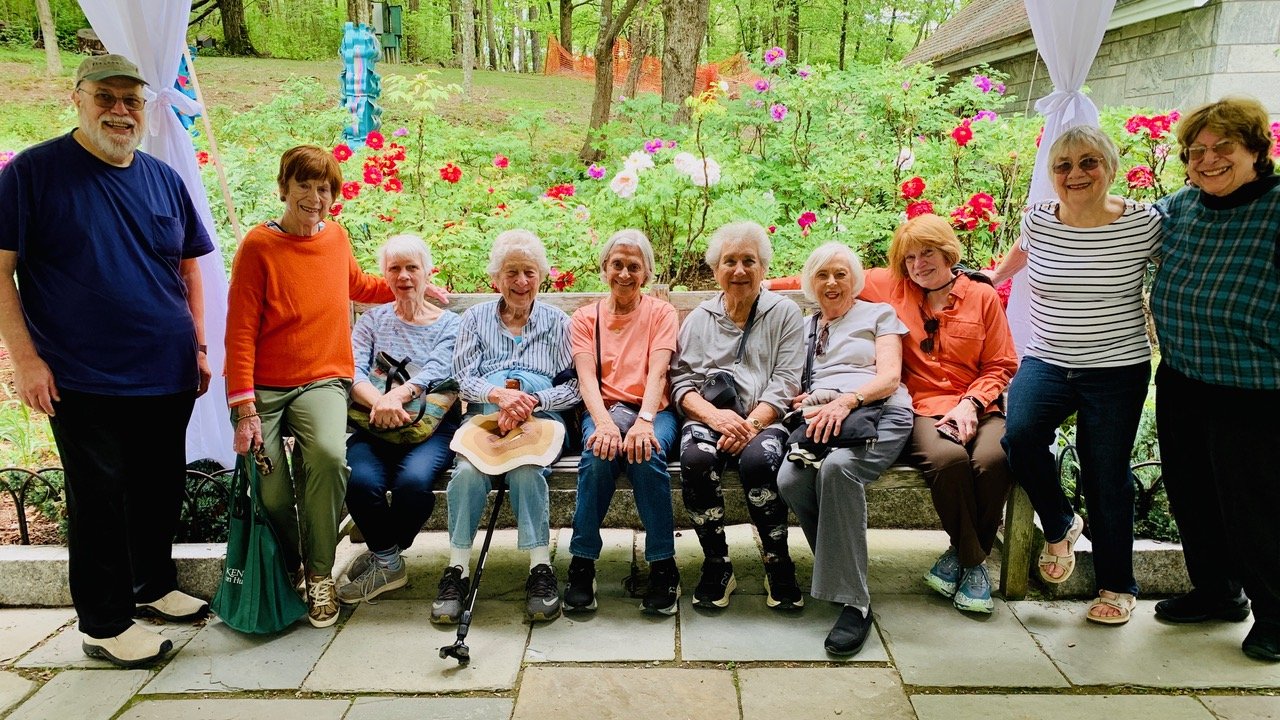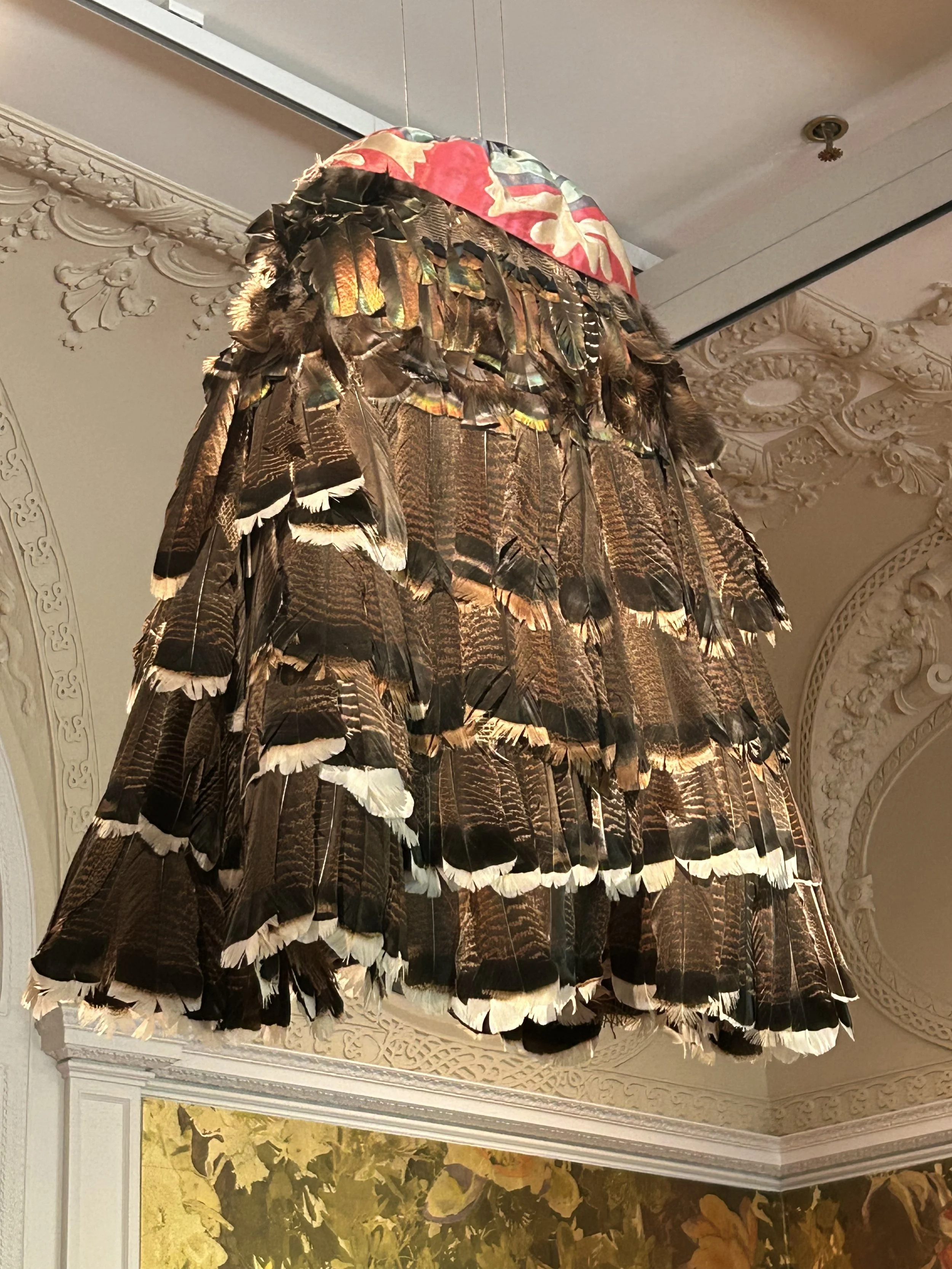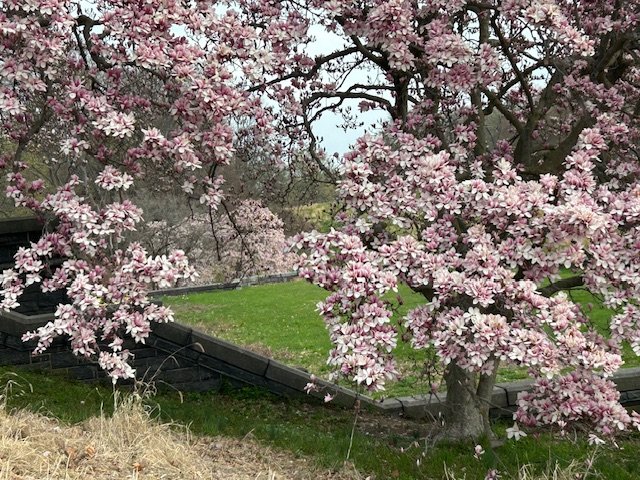From the Office of Ellen Ottstadt
I Never Knew That
What “LOL” Meant in the 1960s
Long before anyone laughed out loud on the internet or in emails, “LOL” was in use by virtue of a different phrase: “little old lady.” The acronym was popularized by San Francisco Chronicle columnist Herb Caen in the 1960s. Caen used the abbreviation “LOL” in many of his works to refer to a “little old lady.” In his 1960 book Only in San Francisco, he described an outfit that included a tricorn hat topped with an “evil-looking bird of prey” as the “regalia of the authentic LOL.” He also once used “little old lady” as an affectionate nickname for a woman who angrily called the White House and told one of Richard Nixon’s aides of her wish that the commander in chief “go COMPLETELY to hell.” After calming down, she made another call, this one to the FBI, to ask, “Is telling the president to go to hell the same thing as threatening his life?” They assured her it was not. In other words, not every LOL was as quiet and demure as that description makes them sound. That was certainly true of the title character in the 1964 hit song “The Little Old Lady From Pasadena,” which describes this situation: “And everybody’s sayin’ that there’s nobody meaner than / The little old lady from Pasadena / She drives real fast and she drives real hard / She’s the terror of Colorado Boulevard.” It seems this particular LOL was nothing to LOL about.
Source: historyfacts.com
Contributed by Jane Hart
Art by Hart
The Fentons liked to birdwatch up close and personal
Edie was never shy to say if you were having a bad hair day
The cool crowd 60 years later was an eye opener for Vinnie
You needed just the right words to talk to Thornton about his halitosis
All the rare species knew Collingwood’s whistle
Art and photos by Jane Hart
For Your Funny Bone
In and Around Kendal
An interior garden: quite succulent!
Photo (and garden) by Maggie Limburg
Nap time at Rockwood Park, by Mimi Abramovitz
Rockwood Spring, by Carolyn Reiss
Green pastures
Carpet of Green
Refreshing the Fitness Center—Temporarily
Photo by Joe Bruno
The Art of Zen and the Rolator
Photo by Joe Bruno
Out and About
Peonies A-Plenty
Every year a host of peonies—given Rockefeller State Park Preserve by the Japanese government to honor those who died on 9/11—burst into radiant bloom. And Kendalites were there, again, to see them this year.
Photos by Harry Bloomfeld
‘Tis the Blooming Season
Carolyn Reiss visited the Newington-Cropsey Foundation Bird Art exhibit and took time to enjoy their gardens, as well.
Red bud with blossoms on the trunk!
Photos by Carolyn Reiss
Really, Really Out and About
View from the Bruno’s hotel room in London
Photo by Joe Bruno
The Weekly Kendal Low-Stakes Poker Report!
The aim is fun, not financial windfall. Fear not any Atlantic City high-rollers joining in. All skill sets are welcome. Stakes are 25-50 cents.
Want to join the fun? Call or text John Vacher: (404) 556-0557. He’ll even come and provide a short tutorial, so you’ll fit in seamlessly your very first Wednesday night.
You Are Invited . . .
This Is What Democracy Looks Like . . .
Thirty Kendalites journeyed to Hastings-on-Hudson on May 3 for a citizen rally.
Weekly Construction Bulletin
From the Office of Ellen Ottstadt
I Never Knew That
What’s With the Story of Lady Godiva?
The legend of Lady Godiva is a tale of noble sacrifice and protest that has captivated the public imagination for centuries. And it’s a tale that blends historical fact with creative embellishment, which has led historians to debate what exactly happened. Was Lady Godiva real? And did she really ride naked through the streets of Coventry?
According to popular legend, Lady Godiva, an 11th-century Anglo-Saxon noblewoman, was disturbed by the heavy taxation that her powerful husband, Leofric, Earl of Mercia, had imposed on the citizens of Coventry, England. She repeatedly pleaded with him to reduce this burden on the townspeople. After numerous refusals, Leofric finally agreed to lower the taxes but only if his wife accepted what he considered an impossible condition: She would have to ride through the streets of Coventry in the nude.
Lady Godiva called her husband’s bluff and took up his challenge. She issued a proclamation that all citizens must remain indoors with their windows shuttered on the appointed day. She then mounted her horse, naked save for her famously long hair, which covered her body as she rode through the silent streets of Coventry. Impressed by his wife’s bravery and devotion to her people, Leofric kept his promise and abolished the oppressive taxes.
Later versions of the legend introduced another character who has endured to this day, and whose name has become a common expression in the English language: Peeping Tom. Tom, according to folklore, was a tailor who, unlike his fellow townsfolk, couldn’t resist looking at the beautiful Lady Godiva as she rode by his window. For this violation, he was allegedly struck blind instantly—a divine punishment for disrespecting Godiva’s noble sacrifice.
Source: historyfacts.com Contributed by Jane Hart
For Your Funny Bone
Contributed by Maria Harris
Contributed by Don Butt
Art by Hart
A walk or a swim with Dad? Burleigh’s kids could never decide
The new pool aerobics class was catching on
Miss Muffet’s first date with Spidey hadn’t gone well
Cousin Cecelia was the fashionista, while Gussie liked to keep things simple
Mary was the first to recognize benefits in live headgear
Art and photos by Jane Hart
In and Around Kendal
Rays from Heaven, by Edward Kasinec
A New Kendal Resident?
Photo by Joe Bruno
In the Spring, a young man’s fancy . . .
Photo by Mimi Abramovitz
Looming Green, by Edward Kasinec
New in the Bistro, by Joe Bruno
Good Night, Kendal.
Photo by Sue Bastian
Out and About
On recent Kendal trip to the Cooper Hewitt Museum , Kendalites visited an exhibit from the Lenape Center. Placed directly across from the museum’s entryway, this installation pays homage to the Lenape people as the original and rightful stewards of Lenapehoking, the land on which this building stands. Accounts written by European explorers in the 16th and 17th centuries described the Lenape wearing intricately constructed feather capes. Joe Baker, co-founder of the Lenape Center, has created contemporary interpretations of these turkey-feather capes that suspend from the ceiling.
Carolyn Klinger sent pictures of these amazing feather capes:
An Invitation to Become a Charter Member of the New Kendal on Hudson Residents’ Committee on the Lenape
Fresco of William Penn and Tamanend and other Lenape Sachems (chiefs), as portrayed in the rotunda of the U.S. Capital, in Washington, D.C., by Constantino Brumidi
Interested Residents are cordially invited to come together in the Gathering Room on Friday, May 9, from 1:30-2:30 pm, for the organizational meeting of a new Resident’s Committee. [Questions: Nick Robinson, KoH 4015]
Established by the Residents’ Council on this past Earth Day, April 22, this new Committee has the following mission:
“The purpose of the Committee on the Lenape is to foster friendship between Kendal on Hudson residents and the Lenape, whose ancestral lands include the region where Kendal on Hudson is located. The Committee will build and sustain a continual engagement with the culture, history, and well-being of the Lenape through educational and other activities, and will coordinate activities with other Residents’ Committees where relevant.”
LENAPE Heritage and Kendal on Hudson
Kendal on Hudson dates back 20 years. Lenape lived in Lenapehoking for some 8000 years. The Munsee Lenape were driven out by Dutch colonial governments, and then the British, and then the Americans. We live and work on the ancestral lands of the Lenape, near the Pocantico river was the Lenape community of Alipoonok (also referred to as Aneebikong, a place of trees). Oaks at Rockwood Hall State Park harken back to these times. Lenapehoking’s tribal communities extended from the Hudson River (Manhattan to the Catskills), across New Jersey and Delaware to the Delaware River (Philadelphia to the Water Gap).
The Delaware Lenape and William Penn agreed the historic Treaty of Shackamaxon in 1682, based on Quaker values: equal respect and love for each individual, peace, fairness, consulting one another as friends, in perpetuity. In the American Revolution, the Continental Congress sought the 1778 Treaty with the Delaware (Fort Pitt). Lenape were allies to fight the British on the western frontier. This was the very first US treaty with any Indian Tribe, only America’s second treaty ever (the first being with France). Throughout, the Lenape have honored their pledge of friendship, serving in the Union Army in the Civil War and guiding the Frémont expedition as it explored the west.
Greed for Lenape lands, and warfare along the western frontier of the USA, forced the Lenape repeatedly to move westward, across the Mississippi. From perhaps 100,000 Lenape in Penn’s day, today only 15,000 remain in three federally recognized tribes in Oklahoma and Wisconsin and in three First Nations recognized by Canada in Ontario. None remain in the Hudson Valley, where Kendal on Hudson is situated today. We would welcome the Lenape as friends.
We at Kendal on Hudson have been honored to receive a Lenape Chief, Curtis Zunigha (Delaware Tribe of Indians), in 2023, to learn from a Monday evening lecture in 2024 by Hadrien Coumans (a co-founder of the Lenape Center and adopted member of the Delaware Tribe) and to welcome the distinguished composer Brent Michael Davids, (Stockbridge-Munsee Tribe), during his residency at Coplan House in 2025. We admire how Lenape culture and values have persisted, evidence of a resilient and wise People. Ours is a special relationship.
Sources: Joe Baker, et al., Lenapehoking: An Anthology (Brooklyn Library, 2023) in the KoH Library; and J.W. Brown and R.T Kohn, eds, LONG JOURNEY HOME – Oral Histories of Contemporary Delaware Indians, (Indiana Univ. Press 2008); Robert S. Grumet, The Lenapes (1989); H.C. Kraft, The Lenape (N.J. Hist. Soc., 1986); C.A. Weslager, The Delaware Indians (Rutgers Univ. Press 1972), and Anne Dalton, The Lenape (2005).
The Weekly Kendal Low-stakes Poker Report!
The aim is fun, not financial windfall. Fear not any Atlantic City high-rollers joining in. All skill sets are welcome. Stakes are 25-50 cents.
Want to join the fun? Call or text John Vacher: (404) 556-0557. He’ll even come and provide a short tutorial, so you’ll fit in seamlessly your very first Wednesday night.
Way Out!
There is now a way out to the Terrace on the T-Level! Or will be once Refresh is completed.
And here’s the hallway that leads past the Fitness Center (right) and the pool (left).
Construction Bulletin
A Refresh Reminder From Ellen Ottstadt
A Kendal Spring
This past week, so many pictures came in featuring the beauty of our Kendal neighborhood that we thought we’d make an entire segment of them.
Photo by Joe Bruno
Photo by Carolyn Reiss
Photo by Carolyn Reiss
Photo by Mimi Abramovitz
Photo by Mimi Abramovitz
Photo by Mimi Abramovitz
White Torch, by Edward Kasinec
Outside Sunnyside, by Joe Bruno
Photo by Joe Bruno






































































